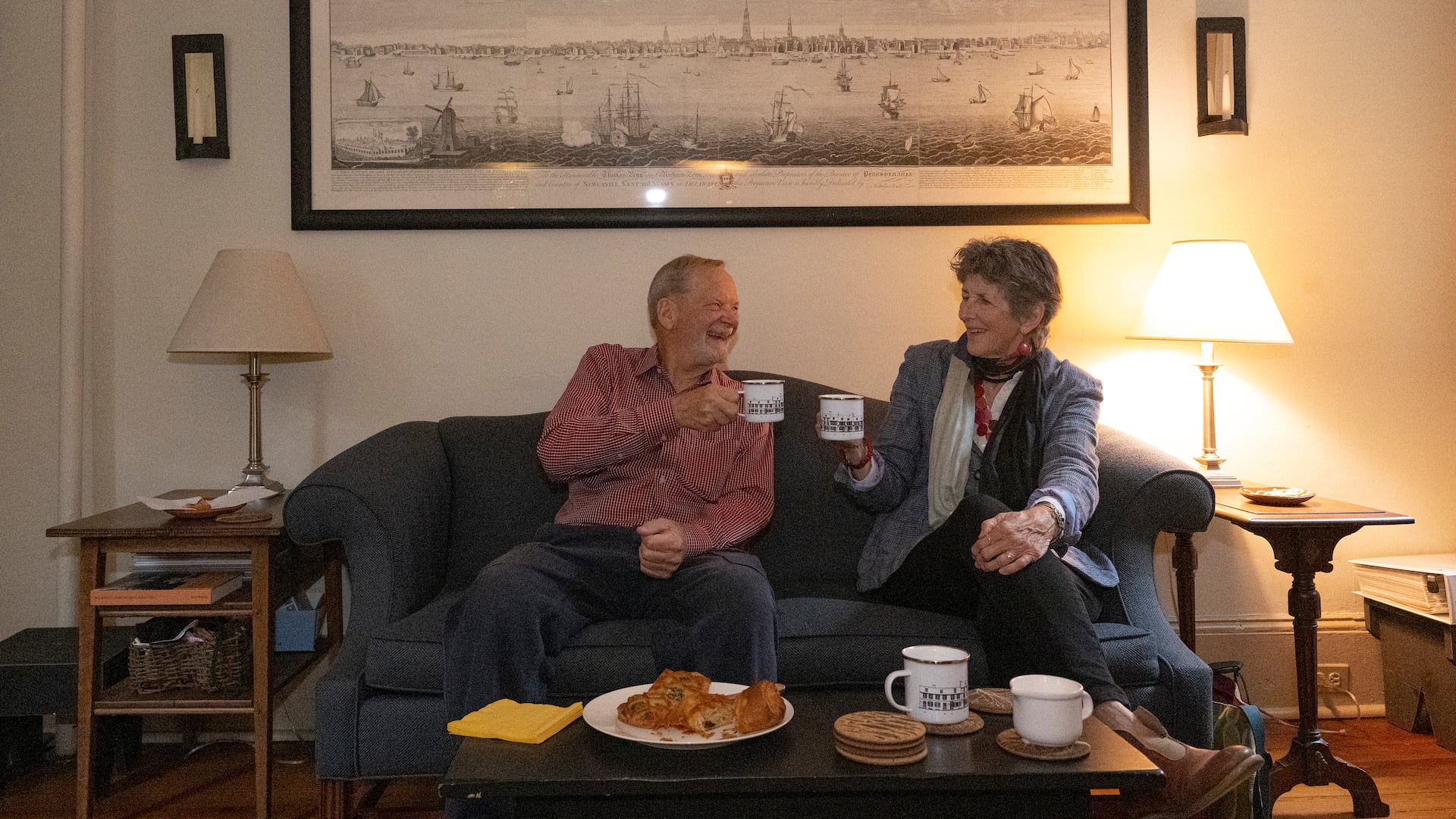On Elfreth’s Alley, living in a landmark
For almost 50 years, Rob and Sue Kettell have welcomed tourists into their home to enjoy its rich history.

Sue Kettell welcomes strangers into her home often. They admire the carved fireplace mantle and the engraving of the Delaware waterfront from the mid-18th century in the living room, the candlelit wrought iron chandelier in the dining room, and the rear garden.
Sue and her husband, Rob, are not running a bed-and-breakfast. She simply encounters the strangers strolling her street and wants to share the history of her 227-year-old house.
The Kettells live on Elfreth’s Alley, a National Historic Landmark with 32 restored brick rowhouses built in the 18th and early 19th centuries.
Since moving to the alley almost 50 years ago, they have seen changes in the surrounding Old City neighborhood. Vintage buildings have been replaced by large apartments and condominiums.
This makes the alley’s small dwellings, built for the working class, all the more charming to thousands of tourists who visit from around the world.
But living in a historic site is not for everyone.
“If you don’t want people staring into your window, don’t live here,” Rob said. It takes a certain kind of person to want to deal with uneven floors, clunky radiators, and no central air, Sue said. The Kettells make do with two window units.
By being so hospitable, the couple have met “fascinating people” from all over the world who write thank you notes saying visiting the home “was the highlight of our trip.” Often travelers want to reciprocate. One who recently wrote the Kettells told them to be in touch, “if you ever get to Venezuela.”
Sue, who grew up in North Jersey, and Rob, who is from Southern California, rented the house on Elfreth’s Alley in 1975 when Rob was a graduate student in urban studies at University of Pennsylvania. Old records show earlier tenants included a chair maker, a sea captain, a sail maker, and a shoemaker. When Temple University archaeology students sifted through fireplace ash in the basement some years ago they found animal bones, buttons, bits of metal, and old shoes.
As tenants, the couple made repairs and helped maintain the home. In 1985, when their landlady’s plans to retire to the house changed, she sold it to them.
The Kettells kept the antique spinning wheel that was in the house when they arrived and added period-appropriate furniture from family members and area shops. Two Windsor chairs in the living room were crafted by a local woodworker using colonial carpentry methods.
They refinished original red pine floors and painted the plaster walls cream, and the wood trim buff. With few closets in the home, Rob hung shelves for scarves and hats above pegs for coats.
The four-bedroom, two-bathroom, three-story house with a dormer was originally smaller. A two-story rear addition was added in 1850.
For years Sue cooked in an outdated kitchen. “You could never tell how hot the oven was,” she said. But when the oven door fell off in 1995, she finally decided to renovate.
Cherry cabinets and white appliances complement the decor of the dining room, with its oak table and hutch from the old kitchen. A similar aesthetic continues in the living room, with its comfortable wingback chairs and sofa, and patterned rug that doesn’t show visitors’ footprints.
Strategically placed windows maximize light. Even so long ago, the builders of the home “knew what they were doing,” Sue said.
Over the blue-and-white-quilt-covered bed in the primary bedroom are silhouettes of the Kettells’ daughters, Meg and Wynne. The now-grown women, each of whom has a daughter, drew them when they were in kindergarten.
Sue, a retired Philadelphia schoolteacher, and Rob, a retired architect, are active in the Elfreth’s Alley Association. In the 1980s, the association lobbied with other civic groups to get barriers that would block the view of and noise from I-95. Rob designed the brick barrier wall at the end of the alley to blend in with the historic houses.
It’s important, he said, “to keep the alley authentic for posterity.”
On Saturday, Dec. 7, The Kettells and neighbors will open their houses to visitors attending Deck the Alley, an annual holiday fundraiser sponsored by the Elfreth’s Alley Association.
Is your house a Haven? Nominate your home by email (and send some digital photographs) at properties@inquirer.com.